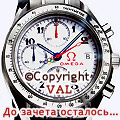 |
 |
 |
 |
 Помощь Помощь
 Поиск Поиск
 Участники Участники
 Календарь Календарь
 Новости Новости
|
 Учебные Материалы Учебные Материалы
 ВАЛтест ВАЛтест
 Фотогалерея Фотогалерея
|
 Правила форума Правила форума
 Виртуальные тренажеры Виртуальные тренажеры
 Мемуары Мемуары
|
| Здравствуйте Гость ( Вход | Регистрация ) | Выслать повторно письмо для активации |
   |
| VAL |
Дата 8.04.2019 15:05
|
||||
Offline Мэтр, проФАН любви... proFAN of love      Профиль Группа: Администраторы Сообщений: 38060 Пользователь №: 1 Регистрация: 6.03.2004 |
(2016) Approaches to Improve Efficiency of Dye-Sensitized Solar Cells Источники: - https://macroheterocycles.isuct.ru/en/syste.../mhc160752e.pdf - Журнал "Макрогетероциклы" DOI: 10.6060/mhc160752e Авторы: Artem V.Ezhov, Kseniya A. Zhdanova, Natal’ya A. Bragina and Andrey F. Mironov (Moscow Technological University (Institute of Fine Chemical Technologies)
PS. Indexing * Chemical Abstracts Service * Web of Science (Thomson Reuters) Impact Factor ISI Web of Knowledge = 0.804 (JCR 2015) * SCOPUS CiteScore 2015 - 0.87 SJR 2015 (SCImago Journal Rank) - 0.243 SNIP 2015 (Source Normalized Impact per Paper) - 0.577 * Russian Index of Scientific Citations (RISC) 5 year Impact factor RISC 2015 - 0.985 (0.815 self-citation excluded) -------------------- |
||||
1 Пользователей читают эту тему (1 Гостей и 0 Скрытых Пользователей)
0 Пользователей:
 |
   |
Powered by Invision Power Board(U) v1.3 Final © 2003 IPS, Inc.
Установка, модификация и поддержка:
Barsum | 1px Design Group & Xac | OппаRU форум
Установка, модификация и поддержка:
Barsum | 1px Design Group & Xac | OппаRU форум





